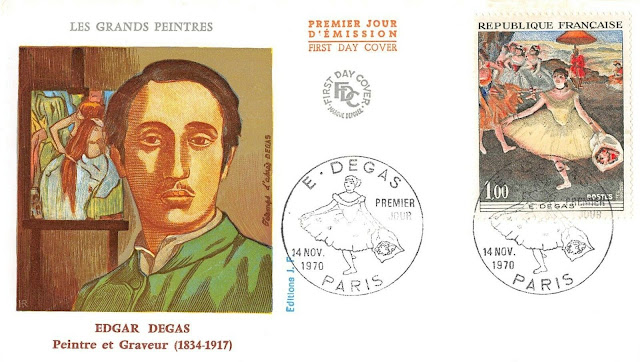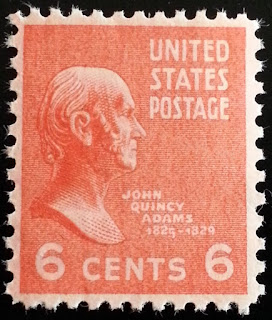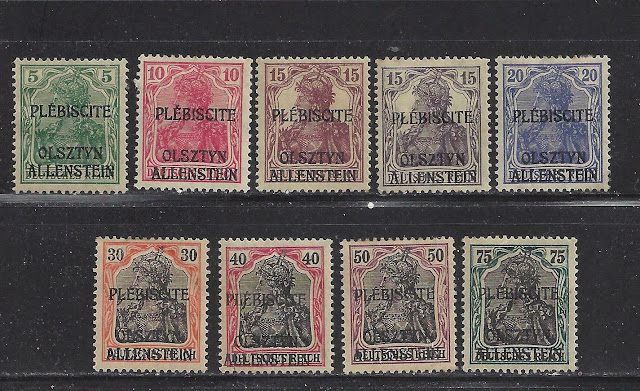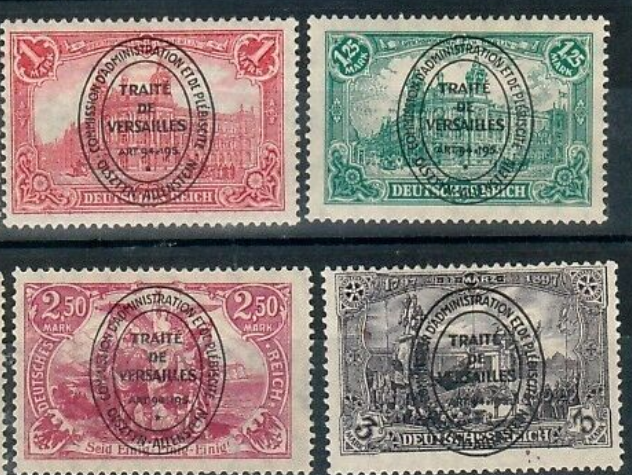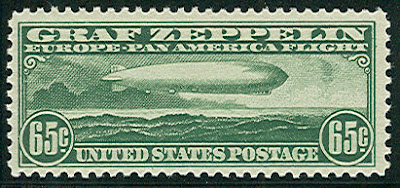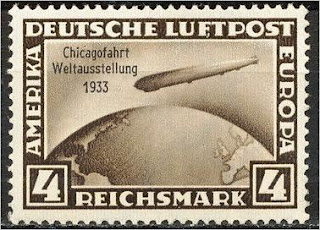1834 Born: Edgar Degas, French painter, sculptor, and illustrator (d. 1917)
Edgar Degas (born Hilaire-Germain-Edgar De Gas, 19 July 1834 – 27 September 1917) was a French artist famous for his paintings, sculptures, prints, and drawings. He is especially identified with the subject of dance; more than half of his works depict dancers. Regarded as one of the founders of Impressionism, he rejected the term, preferring to be called a realist. He was a superb draftsman, and particularly masterly in depicting movement, as can be seen in his rendition of dancers, racecourse subjects and female nudes. His portraits are notable for their psychological complexity and for their portrayal of human isolation
Some stamps depicting Degas and or his artwork
1890 Born: George II of Greece (d. 1947)
George II (Greek: Γεώργιος Βʹ, Geórgios II; 19 July 1890 – 1 April 1947) reigned as King of Greece from 1922 to 1924 and from 1935 to 1947. He was a paternal first cousin of Prince Philip, Duke of Edinburgh.
Some stamps depicting George II

1952 – Opening of the Summer Olympics in Helsinki, Finland.
The 1952 Summer Olympics (Finnish: Kesäolympialaiset 1952; Swedish: Olympiska sommarspelen 1952), officially known as the Games of the XV Olympiad, were an international multi-sport event held in Helsinki, Finland, from July 19 to August 3, 1952.
Medal count
| Rank | Nation | Gold | Silver | Bronze | Total |
|---|---|---|---|---|---|
| 1 | United States | 40 | 19 | 17 | 76 |
| 2 | Soviet Union | 22 | 30 | 19 | 71 |
| 3 | Hungary | 16 | 10 | 16 | 42 |
| 4 | Sweden | 12 | 13 | 10 | 35 |
| 5 | Italy | 8 | 9 | 4 | 21 |
Some stamps issued to commemorate the 1952 Olympics
1980 – Opening of the Summer Olympics in Moscow.
The 1980 Summer Olympics, officially known as the Games of the XXII Olympiad (Russian: И́гры XXII Олимпиа́ды, tr. Igry XXII Olimpiady), was an international multi-sport event held in Moscow, Soviet Union, in present-day Russia.
The 1980 Games were the first Olympic Games to be staged in Eastern Europe, and remain the only Summer Olympics held there, as well as the first Olympic Games to be held in a Slavic language-speaking country. They were also the first Olympic Games to be held in a socialist country, and the only Summer Games to be held in such a country until 2008 in Beijing, China
Eighty nations were represented at the Moscow Games – the smallest number since 1956. Led by the United States, 66 countries boycotted the games entirely because of the Soviet–Afghan War. Some athletes from some of the boycotting countries (they are not included in the list of 66 countries that boycotted the games entirely) participated in the games under the Olympic Flag. The Soviet Union would later boycott the 1984 Summer Olympics.
Medal count
| Rank | Nation | Gold | Silver | Bronze | Total |
|---|---|---|---|---|---|
| 1 | Soviet Union (URS)* | 80 | 69 | 46 | 195 |
| 2 | East Germany (GDR) | 47 | 37 | 42 | 126 |
| 3 | Bulgaria (BUL) | 8 | 16 | 17 | 41 |
| 4 | Cuba (CUB) | 8 | 7 | 5 | 20 |
| 5 | Italy (ITA) | 8 | 3 | 4 | 15 |
Some stamps issued to commemorate the 1980 Olympics
